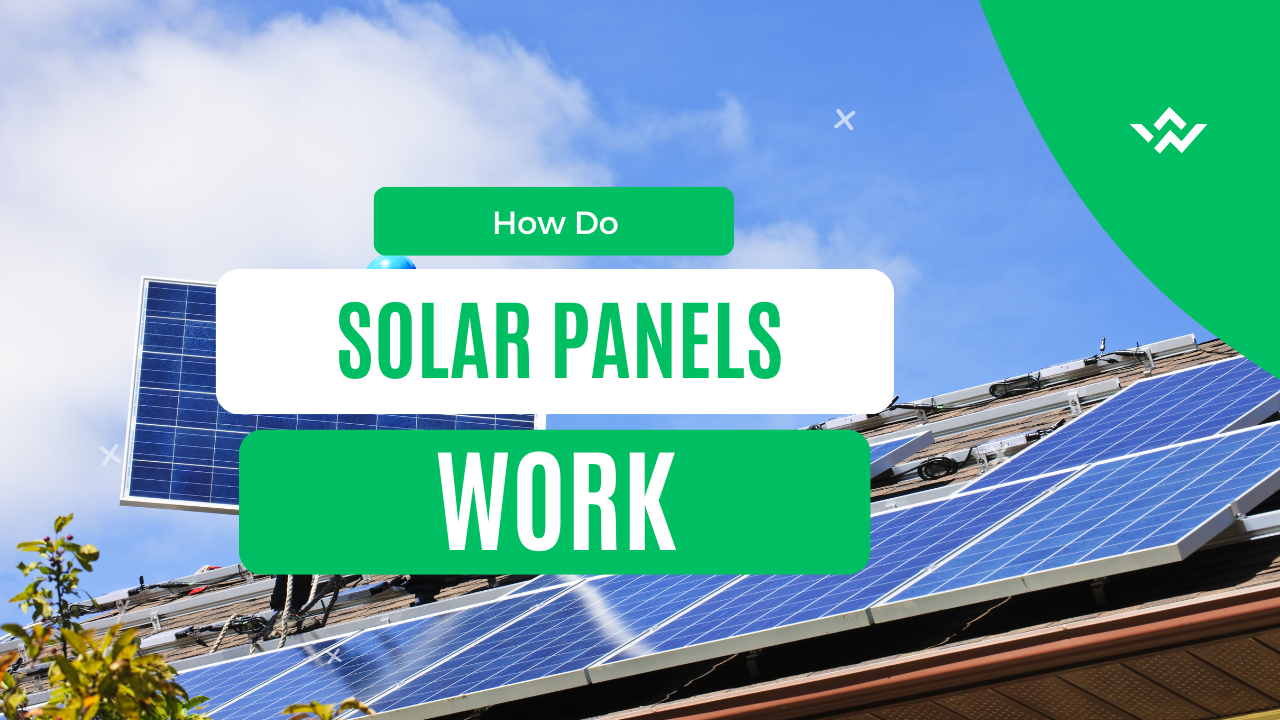How Do Solar Panels Work
A Beginner’s Guide to the Science Behind Solar Energy
Solar energy is one of the fastest-growing renewable energy sources in the world. But have you ever wondered how solar panels actually work? In this guide, we’ll break down the process from sunlight to usable electricity—clearly, simply, and sustainably.
☀️ What Are Solar Panels Made Of?
Solar panels are made up of multiple solar cells, usually made from silicon, a semiconductor material. These cells are grouped into panels and mounted on rooftops or solar farms. When sunlight hits these cells, it triggers a chain reaction that generates electricity.
Step-by-Step: How Solar Panels Work
- Sunlight Activates the Solar Cells
- When the sun shines on a solar panel, photons (light particles) strike the surface of the cells.
- The Photovoltaic Effect Occurs
- This triggers the photovoltaic effect, where the energy from the photons knocks electrons loose from atoms in the silicon. These free electrons start to flow, creating an electric current.
- Electricity Is Generated (DC Power)
- This flow of electrons produces direct current (DC) electricity. However, most homes use alternating current (AC), so an inverter is needed.
- An Inverter Converts DC to AC
- The solar inverter transforms the DC electricity into AC electricity, making it compatible with your home’s appliances and devices.
- Powering Your Home or Sending to the Grid
- Once converted, the electricity flows into your home’s electrical panel, powering lights, outlets, and appliances. Any extra electricity can be sent back to the utility grid (if you’re connected), earning you net metering credits.
🔋 What About Cloudy Days or Night-time?
Solar panels produce less power on cloudy days and none at night. However, modern systems can include solar batteries that store excess energy during the day for use later. This makes your system more efficient and reduces reliance on the grid.
🔧 Components of a Solar Power System
To better understand how solar panels work, it helps to know the key parts of a full system:
| Component | Function |
|---|---|
| Solar Panels | Capture sunlight and generate DC electricity |
| Inverter | Converts DC to usable AC power |
| Mounting System | Secures panels to your roof or ground |
| Battery Storage | (Optional) Stores extra energy |
| Net Meter | Tracks energy sent to and from the grid |
🌎 Why Understanding This Matters
Understanding how solar panels work helps you make smarter energy decisions. Whether you’re exploring solar for environmental reasons or looking to save on electricity bills, knowing the basics empowers you to choose the right setup for your home.
Key Benefits of Solar Energy
- Lower electricity bills
- Reduced carbon footprint
- Increased home value
- Long-term return on investment
- Energy independence
💡 Final Thoughts
Solar panels work through a fascinating process that transforms simple sunlight into usable electricity for your home. Thanks to the photovoltaic effect, you can harness clean energy and reduce your reliance on fossil fuels.
Thinking about going solar? At GreenEnergyTips.com, we provide expert advice, product reviews, and up-to-date tips to help you make the best decision for your energy future.


